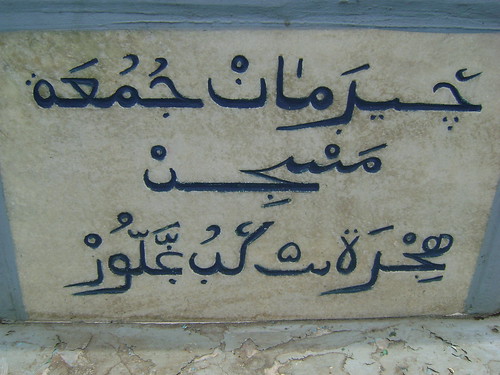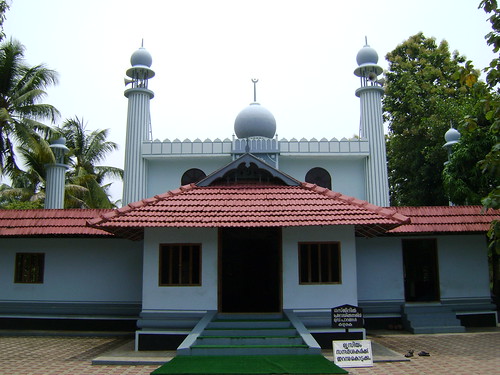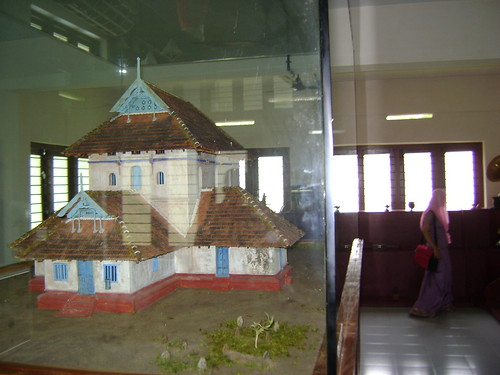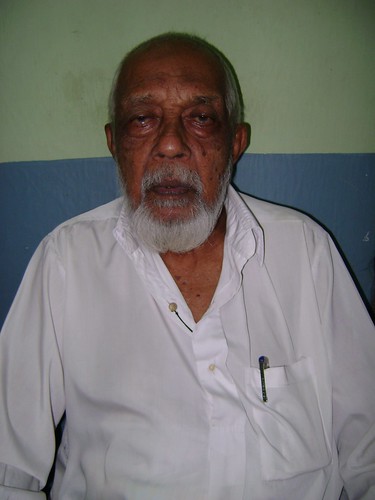By Kashif-ul-Huda, TwoCircles.net
TCN Malabar series– part 2
Local traditions have it that Cheraman Juma Masjid in Kerala was established in the year 629CE. An inscription in Arabi-Malayalam language on the gate of the masjid gives the date as 5 Hijri. This makes Cheraman Juma Masjid in Kodungallur in the Thrissur district of Kerala, the first mosque of India and one of the oldest in the whole world.
Legend has it that the king of Kodungallur, Cheraman Perumal accepted Islam and traveled to Madina to meet the Prophet Mohammad (salallahu alaihi wasallam). He died on his way back and is now buried in Salalah, Oman. Before dying, he instructed his travel companions to spread the message of Islam in his homeland.

A group of Muslim travelers led by a companion of the Prophet, Malik Bin Dinar (not to be confused with the famous scholar of the same name) came to Kerala and according to the wishes of Cheraman Perumal, established this and other mosques in Kerala and also instructed people in Islamic practices. These mosques survived and continue to be functional mosques where regular prayers and educational functions are conducted even to this day.

Inscription in Arabi-Malayalam dates the mosque to 5th year of Hijri
Located on National Highway-17, Cheruman Juma Masjid is an important Kerala landmark. The place is called Cheraman Malik Nagar in the honor of King Cheraman Perumal and Malik Bin Dinar. The masjid has seen some renovations over the years but the original hall and internal structure have been preserved. Four minarets have been added in one of the later renovations but attempts have been made to give the look and feel of the old structure in the exterior of the building.

Cheraman Juma Masjid, as it stands now.
Ignore the minarets, and the small dome and you can imagine how this building would have looked like hundreds or a thousand years ago. The museum on site has pictures and a model of the old structure to help you imagine. Located on the side of the main street (now NH-17), the masjid is surrounded by shops and homes. It is a community institution situated well within the community.
The original structure did not look like anything foreign, the architecture and design both inside and outside resembles local influence. It was a double storied structure with a sloping tiled roof. Unlike the mosques of North India, there are no minarets or Arabic calligraphy or complex geometrical patterns on the outside the building. The simple entrance must have been inviting and not intimidating, a reflection on how Islam came to Kerala and got well entrenched in the land.
The main room, which is the part of the original structure, is small. It probably can host only about four rows of 15 people for prayers. There is an old wooden mimbar with an intricate design. Along with fans hanging from the ceiling, there is a big brass lamp, not unlike what can be found in a Hindu temple. But my enquiries did not reveal anything special about this lamp.

A model of the older building exist in the museum.
Just left of this main prayer hall are the grave of Malik Bin Dinar’s son and wife. Malik Bin Dinar himself is buried in Kasargod, about 350 kms from here. The right side of the masjid is a big graveyard; since many graves have been reused, it is difficult to tell how old the oldest grave is. Behind the mosque is an artificial pond that was used for making ablution.
The Masjid is run by a committee and they are doing their utmost to preserve the history and traditions of this important landmark of Islam in India. One of the living history is the Muezzin of the mosque. He upholds his family tradition of several generations by being the current Muezzin. The Imam and Muezzin live in quarters that are located behind the masjid.

Syed Muhammad is giving azan for the last 77 years
There is a museum on the premises which is in desperate need of more historical artifacts of the glorious past of Malabar Muslims.
Links:
http://cheramanmosque.com/
http://en.wikipedia.org/wiki/Cheraman_Juma_Masjid
http://www.iosworld.org/interview_cheramul.htm
